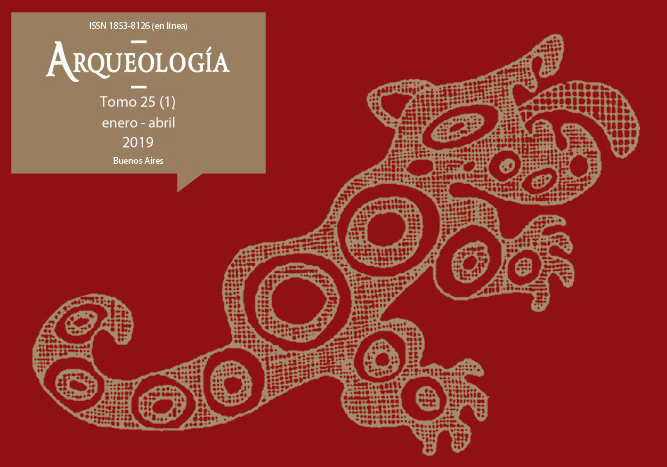Grabados imperceptibles. Pisadas y paralelas del sitio Piedra Auque, Departamento Minas, noroeste de la Provincia de Neuquén
Palabras clave:
Roca pirofilita, Grabados, Pisadas, Paralelas, Norte neuquino
Resumen
En este trabajo se presenta un nuevo sitio con grabados rupestres localizado en el valle del arroyo Auque, en el noroeste de la provincia de Neuquén. Se trata de grabados efectuados sobre un afloramiento de pirofilita, roca similar a la esteatita o comúnmente denominada piedra sapo o jabón. Debido a la notable excepcionalidad de su uso como soporte efectuamos una caracterización del mismo, como también de los motivos presentes, las técnicas empleadas, su localización espacial y visibilidad arqueológica. De este modo, discutimos la particularidad de los diseños grabados dentro del contexto de producción rupestre de la cuenca del río Neuquén y el norte neuquino en general.Descargas
La descarga de datos todavía no está disponible.
Publicado
2019-02-01
Cómo citar
Vargas, F. E., & Hajduk, A. (2019). Grabados imperceptibles. Pisadas y paralelas del sitio Piedra Auque, Departamento Minas, noroeste de la Provincia de Neuquén. Arqueología, 25(1), 245-257. https://doi.org/10.34096/arqueologia.t25.n1.6017
Sección
Notas
Derechos de autor 2019 Fernando E. Vargas, Adán Hajduk

Esta obra está bajo licencia internacional Creative Commons Reconocimiento-NoComercial-CompartirIgual 4.0.
Los autores/as que publiquen en esta revista aceptan las siguientes condiciones:
- Los autores/as conservan los derechos de autor y ceden a la revista el derecho de la primera publicación, con el trabajo registrado mediante Licencia Creative Commons 4.0 Internacional (CC-BY-NC-SA), que permite a terceros utilizar lo publicado siempre que mencionen la autoría del trabajo y a la primera publicación en esta revista.
- Los autores/as pueden realizar otros acuerdos contractuales independientes y adicionales para la distribución no exclusiva de la versión del artículo publicado en esta revista (p.e. incluirlo en un repositorio institucional o publicarlo en un libro) siempre que indiquen claramente que el trabajo se publicó por primera vez en esta revista.
- Se permite y recomienda a los autores/as a publicar su trabajo en Internet (p.e. en sus sitios web personales o en depósitos institucionales), tanto antes como después de su publicación en esta revista, siempre y cuando proporcionen información bibliográfica que acredite, si procede, su publicación en ella. De esta manera, pueden favorecerse intercambios productivos y a una mayor y más rápida difusión del trabajo publicado (vea The Effect of Open Access).



.png)

(1)13.png)






1.jpg)
1.png)
1.jpg)


13.png)
1.png)


(1)1.png)









